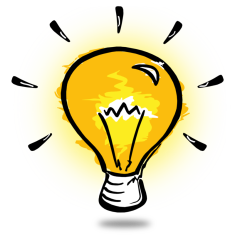 Have you ever wondered why people use a paper based workflow, when there are more efficient software solutions available for doing the same job? This is referred to as non-consumption, when users prefer not so effective methods for doing a particular job while better solutions are available in the market.
Have you ever wondered why people use a paper based workflow, when there are more efficient software solutions available for doing the same job? This is referred to as non-consumption, when users prefer not so effective methods for doing a particular job while better solutions are available in the market.
The reason is that non-consumption is most difficult to understand and solve, and it cannot be solved by dreaming up and developing a product within office walls. To disrupt non-consumption, the innovators need to get in front of the customers (those who are non-consumers) and understand why they don’t use the available solutions. Once you understand the reasons you can try to solve for eliminating non-consumption and many times this has nothing to do with the product. In this blog I would highlight few reasons why non-consumption exists, drawing from my experience and reasons suggested in a must read book “The Innovator Guide to Growth “.
Here are top five reasons for non-consumption:
- Behavioral: Imagine a situation, a worker has used a paper based workflow for 30 years. She started on this job right after school and worries about her financials if this workflow automates. There could be hundreds of these workers in a company and they do not want any technology to disrupt their jobs. They will create big resistance to change and non-consumption will continue to exist. The solution here is change management led by the company management. Product innovation can do very little in terms of eliminating non-consumption.
- Specialized Skill: Jobs where specific skills are needed and technology is not an option. This is typically the case in services industry, like healthcare. But right type of technology can cut non-consumption by making the job less dependent on skill. An example shared in the book is about hip and knee implant makers improving their product over years, making it easy and foolproof to implant their products. This essentially is reducing the impact of orthopedic surgeons’ skill in the surgery, hence increasing consumption of the product earlier in the value chain.
- Price: Major reason for non-consumption to exist is that alternative technology is too expensive to justify the use. This constraint to product use is easily spotted, but solving the problem takes significant analysis and innovation. Product/service providers need to understand different customer segments and the customers’ lifetime value to the company. Based on this analysis, they need to analyze the high value segments (both in terms of $ and scale) and see if Price is still a constraint. If it is then companies need to cut down the price of their products/service. This is done by eliminating the features/functionality or by improving overall efficiency in producing and delivering the product/service to the customers.
- Access: Customers might really like a product and would like to use it, but they are not able to use the product in their environment. For example, sales people who are always in the field cannot access the customer information/intelligence inside the sales management tool. Unless this tool has someway to deliver this information right before that big meeting. This will create access problems which will lead to non-consumption. This is solved by methodically deconstructing the process in which the product/service is used, adding environmental restrictions to the process and innovating a product/service that will work within this constrained environment.
- Time: Here non-consumption exists because it is very difficult or cumbersome to use the product. An example from the book is reading newspaper, as it is becoming increasingly difficult for people to spend hour+ in a day to read newspaper. Hence there has been a steady decline in newspaper readership. To find this constraint, one needs to understand the ideal outcomes that a customer wants while using the product. And if one of the highly unsatisfied outcome is “ease of use” or “time to consume”, then we know that non-consumption is related to time. This can be solved by simplifying the product and making it easier to consume the product/service on-demand or in smaller chunks of time.
All of the above mentioned constraints to non-consumption are solved by actively listening to customers, understanding their process/environments and innovating products that can be used in those environments. Please share your thoughts and experiences related to non-consumption in the comments

That’s really interesting. Thanks for posting all the great information! Had never thought of it all that way before.
Very informative and trustworthy blog. Please keep updating with great posts like this one.
I would like to thanks a ton for the work you’ve put in writing this web site. I am hoping the same high-grade webpage post from you in the upcoming also. The fact is your original writing abilities has inspired me to get my own site now. Actually the blogging is spreading its wings fast. Your write up is the best example of it.